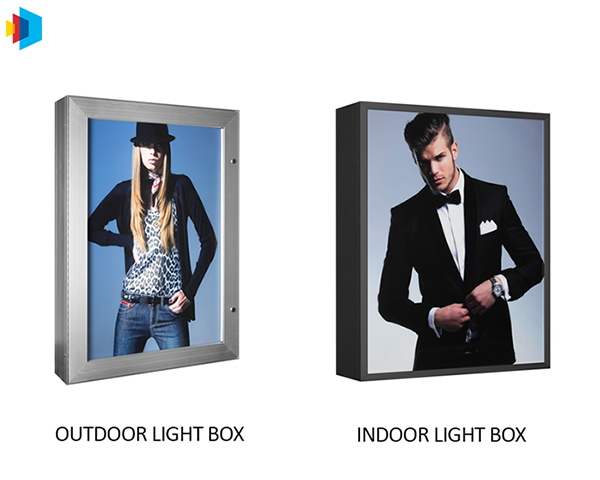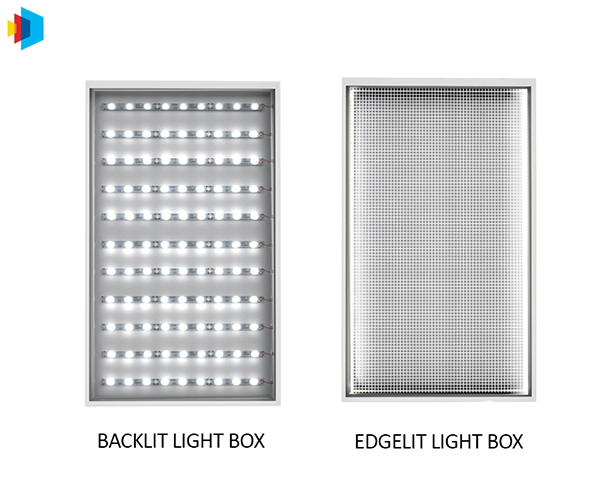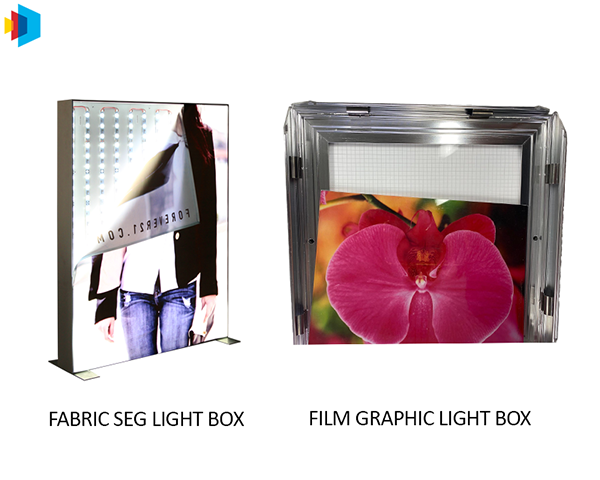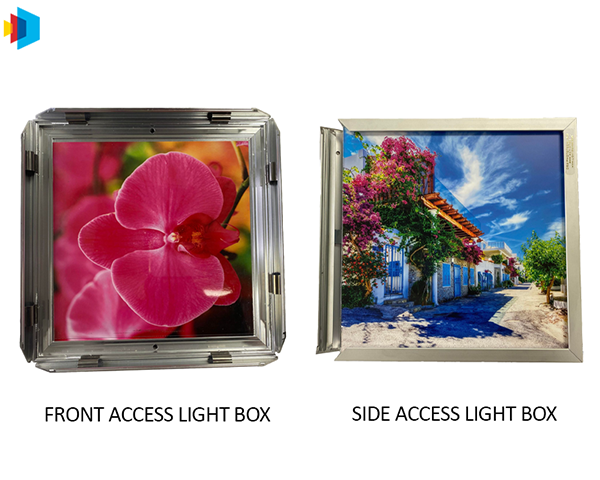What are the different types of light boxes? Here are some considerations to help you choose which illuminated display will be best for your needs, among all the options!
LED Light Boxes are powerful display solutions used for a variety of purposes, like advertising, art exhibiting, wayfinding, or decorating. They illuminate any graphic and make your content even more visible and eye-catching to your audience.
Various types of light boxes exist on the market, and it might be confusing if you are wondering what features you should be looking at. This article will explain the different characteristics of light boxes you should be looking for.
1. Application: Indoor or Outdoor?
This is the first question you will be asked when ordering a light box. Most light boxes you find online are designed for indoor use only. When looking for an outdoor display to illuminate your graphic, make sure that you select an option with a durable frame that will not rust or fail if exposed to high traffic or harsh weather elements. Outdoor displays also need to be weatherproofed to protect your content and the electrical components.
Our outdoor “Hidden Hinge” light boxes have additional features compared to the indoor options: a polycarbonate door featuring a lock, will protect your graphic from vandalism and is sealed with silicone around the perimeter to prevent water from getting in.
The most durable and reliable material for your outdoor display frame is aluminum: it resists corrosion and doesn’t rust or bend/dent over time. If you consider a colored frame, make sure it is powder coated and not painted, it provides a more durable finish and better performance than liquid paints.
Since light boxes are electrical fixtures and require power to run, if these electrical components are exposed to hazardous conditions without proper protection, they could burn from the inside or catch fire. Like any other electrical equipment, light boxes have to be UL Listed to ensure the safety of your premises and the people around. So, before ordering an illuminated display, always look for the UL Certification label, whether you plan to install it inside or outside.

2. Illumination: Edgelit or Backlit?
Edgelit light boxes have LEDs placed along the two sides of the light box’s back panel, whereas a “backlit” light box features rows of LEDs lined up on the panel’s entire surface.
Unlike what one might think, edgelit illumination is not a bad option: it is often cost-effective and energy-saving. We add a grid pattern behind the graphic, which is made of laser etched acrylic and allows the light to travel to offer an even illumination. Note that most thin light boxes less than 2” deep are only available in edgelit, as it saves space in the back of the display.
However, backlit displays are preferred for large format graphics to ensure dark spots are not found once they are turned on.

3. Graphic support: Fabric or Film graphic?
In order for light to shine through, LEDs can only illuminate transparent or semi-transparent materials. When it comes to printed graphics, two materials can be illuminated in a display: fabric or backlit film (previously known as “Duratrans,” a material used to print photography).
When it comes to fabric illumination, light boxes support SEG or Silicone Edged Graphics. Silicone Edges make it easy to install the graphic inside your light box or to remove it as you update your content. Different types of compatible fabric materials exist, depending on the end environment and their potential exposition to water, as not all fabrics offer the same resistance. You should always confirm that the fabric material you choose is fire retardant by reviewing the available fire certificates for your safety.
Both fabric and film graphics can be displayed indoor or outdoor. Still, the light box design will have to be adapted to support the graphic material and the intended application.

4. Graphic loading: Front Access or Side Access?
Light boxes offer different graphic loading options, which is an important feature to consider depending on the setup of your display area. The snap frame opens from all four sides on front access light boxes, allowing quick and easy graphic change. Other light boxes open from the side, so you can slide your graphic in from one of the edges of the display if the front is not accessible.

As mentioned in the previous section, fabric SEG is inserted into a rail on the light box frame, which is another type of graphic loading. Other options for graphic access exist, but these are the most common in the market.
To summarize, there are no “one-size fits all” when it comes to light boxes!
They have to be chosen based on your intended usage and premise environment. At DSA, all our illuminated and digital displays are made to order and designed based on your specifications. We like to gather as much information as possible before working on your quote to ensure that the product you get meets all your needs.
Now that you are prepared, you can have fun with your signage! And remember that DSA experts are here to help!
 DSA Signage
DSA Signage